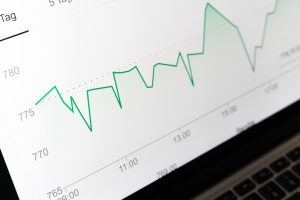Forex trading refers to the buying and selling of currencies in the foreign exchange market. Traders aim to make profits by speculating on the price movements of different currency pairs. To achieve this goal, traders use various technical indicators and tools to analyze the market and make informed trading decisions.
One such tool that traders use is deviation. Deviation in forex refers to the difference between the actual value and the expected value of a particular economic indicator. Economic indicators are statistical releases that provide insights into the economic performance of a country or region. Forex traders use these indicators to gauge the health of an economy and make predictions about future price movements.
Deviation in forex is often expressed as a percentage or a number of pips. A positive deviation means that the actual value is higher than the expected value, while a negative deviation means that the actual value is lower than expected. For example, if the expected GDP growth rate of a country is 3%, but the actual growth rate turns out to be 4%, the deviation would be +1%.
Deviation is an important concept in forex trading because it can have a significant impact on the price of currencies. When economic indicators deviate significantly from their expected values, it can cause volatility in the forex market. Traders use this volatility to make profits by buying or selling currencies at the right time.
There are several economic indicators that traders use to track deviation in the forex market. Some of the most commonly used indicators include:
1. Gross Domestic Product (GDP): GDP is a measure of the total economic output of a country. It includes all goods and services produced within a country’s borders. Traders use GDP to gauge the overall health of an economy and make predictions about future price movements.
2. Consumer Price Index (CPI): CPI measures the average change in prices of a basket of goods and services consumed by households. Traders use CPI to gauge inflationary pressures in an economy and make predictions about future price movements.
3. Unemployment Rate: The unemployment rate measures the percentage of the labor force that is unemployed but actively seeking employment. Traders use the unemployment rate to gauge the health of an economy and make predictions about future price movements.
4. Interest Rates: Interest rates are set by central banks to control inflation and stimulate economic growth. Traders use changes in interest rates to make predictions about future price movements.
Traders use deviation in forex to make trading decisions based on economic indicators. For example, if the CPI deviates significantly from its expected value, traders may interpret this as a sign of inflationary pressure in the economy. They may then buy currencies that are expected to appreciate in value in response to inflationary pressures.
Another way traders use deviation in forex is by trading news releases. When economic indicators are released, traders may buy or sell currencies based on whether the actual value deviates from the expected value. This strategy is known as news trading and can be highly profitable if done correctly.
In conclusion, deviation in forex refers to the difference between the actual value and the expected value of an economic indicator. Traders use deviation to make informed trading decisions based on economic indicators. Deviation can have a significant impact on the forex market and can cause volatility that traders can use to make profits. By understanding deviation, traders can improve their chances of success in the forex market.





